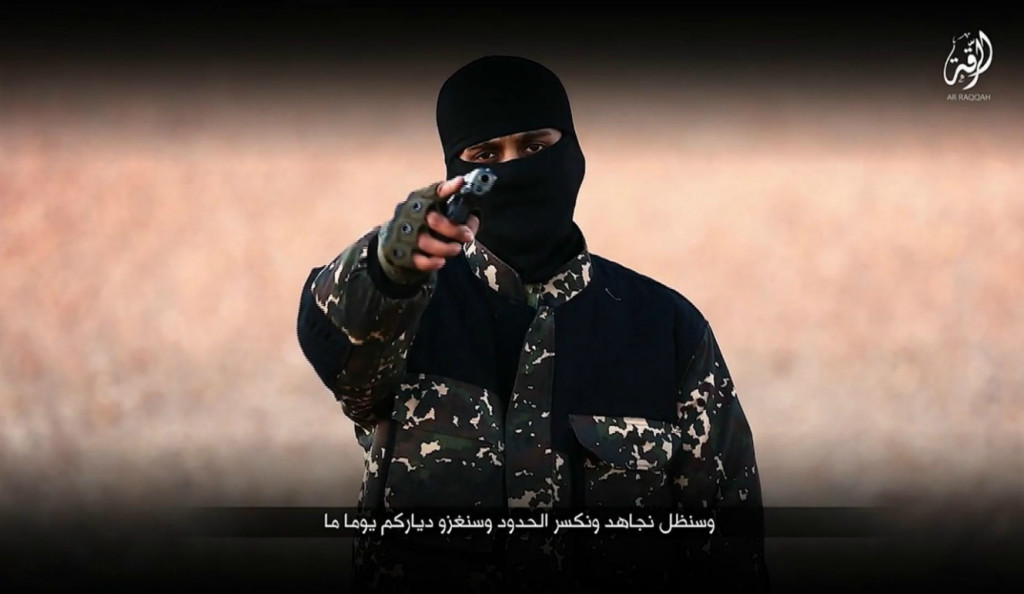The Art of Barbarity: Propaganda from WWI to the Islamic State

The so-called Islamic State has become infamous for its brutality. Not only has it implemented the old standby of chopping off the hands of alleged thieves, it has also taken to crucifying people for a variety of transgressions. The Islamic State clearly hopes that these horrific actions will attract people to the group’s cause. At the same time, however, these actions harden opposition to it among almost all outsiders.
A century ago, during World War I, American and Allied propaganda showed the Germans as comparably bloodthirsty and inhuman. Often they drew on the German “Rape of Belgium.” Two American posters illustrate the point. These posters were apparently commissioned by the U.S. Army recruiting station at 660 Market Street in San Francisco. One, called “They Crucify,” produced in 1917 and held today at the University of California, Berkeley, shows a half-naked woman nailed to a wall as her dead husband and child lie on the floor. According to a small text box at the top left, the poster:
portrays an actual incident of the war, witnessed by Sergeant Albert Goad, formerly of the Seaforth Highlanders, but since stationed with the British recruiting Mission in San Francisco. The atrocity was perpetrated in Belgium, in a shell shattered cottage, where Sergeant Goad found a murdered husband, a mother nailed to the wall, and a babe mutilated by a bayonet. The Sergeant told of this experience to the artist M. Hoyle, of San Francisco, who in turn painted it for the San Francisco Army Recruiting District, adhering conscientiously to the facts.
At the bottom of the poster is the exhortation: “American Manhood Enlist.”
The other poster, produced in 1918 and held at the Pritzker Military Library in Chicago, entitled “They Mutilate,” mocks Germany’s claims to embody the height of culture and sophistication. It shows a boy without hands standing on a pedestal marked “Kultur” as a city burns behind him. (Careful observers will note that the boy appears to be wearing wooden shoes, objects that we normally associate with Holland but which were also worn in Belgium.) At the bottom of the poster comes the challenge: “For Humanity’s Sake Enlist.”
While it is impossible to say what effect these particular posters had, the themes shown here were common in recruiting materials and the U.S. Army grew rapidly to enormous size. The emotive power of the Islamic State’s mutilations, crucifixions and sexual slavery are probably no less significant today, although the U.S. military no longer so concertedly and directly leverages such barbarity in its recruitment campaigns (and wouldn’t even if the U.S. government was not so intent on avoiding putting “boots on the ground”).
Recruitment considerations aside, there is a difference, of course, between the Germans of World War I and the Islamic State today. A century ago, the portrayal of Germans as bloodthirsty monsters capable of anything came primarily from their opponents’ propaganda machines — that image was not one the German government actively sought to promote. The Islamic State, by contrast, documents its atrocities and wants you to know about them. They need no enemy propagandists to show the world precisely who they are and what they’re capable of.
Mark Stout is a Senior Editor at War on the Rocks. He is the Director of the MA Program in Global Security Studies and the Graduate Certificate Program in Intelligence at Johns Hopkins University’s School of Arts and Sciences in Washington, D.C.

